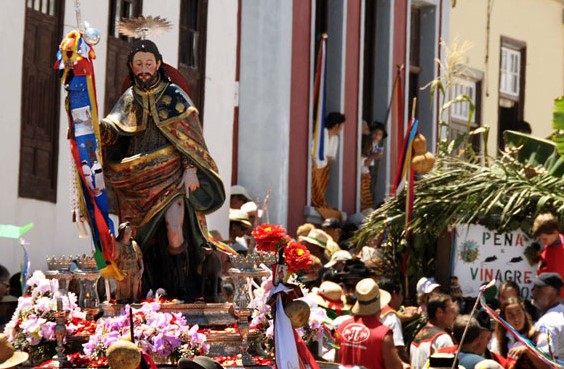 |
| Corazones de Tejina |
On a Sunday close to 24th August, in Tejina - the village is a district of La Laguna - (see map) holds the Corazones de Tejina, part of their annual Fiestas de San Bartolomé, which has been described as "One of Tenerife’s ‘quirky’ fiestas with three beautiful, giant hearts made from fruit and pastries depicting local life and scenes being paraded through the towns streets before they are erected outside of the church and abused by the creators of the other hearts."
Corazones de Tejina (The Hearts of Tejina) takes place on the Sunday closest to 24 August. This is one of the most brightly coloured and striking traditions on the island, which is why the residents are so keen to keep it alive. The three main neighbourhoods in the town (El Pico, Calle Arriba and Calle Abajo) bring out the hearts that they have been working on for days. Once raised, an entertaining ritual begins in which each neighbourhood tauntingly mocks the others' hearts.





 After more than 20 years, posts here will now only be occasional (
After more than 20 years, posts here will now only be occasional (
